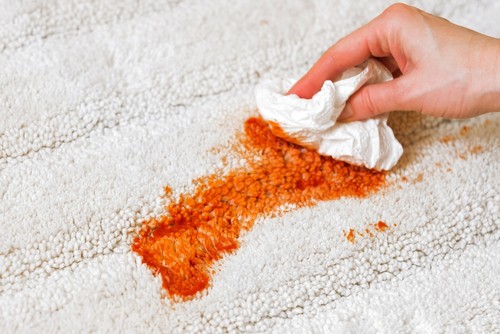
Upholstery Stain Removal Tips for Post-New Year Spills. New Year celebrations, while joyous and festive, often result in accidental spills and stains on upholstery.
Quick and effective removal of these stains is essential to maintain the appearance and longevity of your furniture.
This guide provides comprehensive tips for tackling various types of stains, ensuring your upholstery remains as vibrant and welcoming as the celebration itself.
The Basics of Upholstery Stain Removal
Upholstery is made from a variety of materials, including natural fibers like cotton and silk, and synthetics like polyester and microfiber. Each material responds differently to cleaning methods, so identifying your upholstery type is crucial.
Post-New Year celebrations can leave behind a variety of stains, from red wine and chocolate to greasy food marks. Identifying the stain type is the first step in choosing the correct removal strategy.
Pre-treating involves blotting up any excess spill and then lightly applying a suitable cleaning agent to start breaking down the stain.
Homemade Stain Removal Solutions
Everyday ingredients like white vinegar, baking soda, and lemon juice can be used to create effective, safe, and eco-friendly stain removers.
For general stains, a mixture of one part vinegar and two parts water works well. For oil-based stains, a paste made from baking soda and water can be applied to absorb the grease.
Always test your homemade solution on an inconspicuous area first. Apply the solution gently, without over-saturating the fabric, and blot, don’t rub, to avoid spreading the stain.
Tackling Common New Year Stains
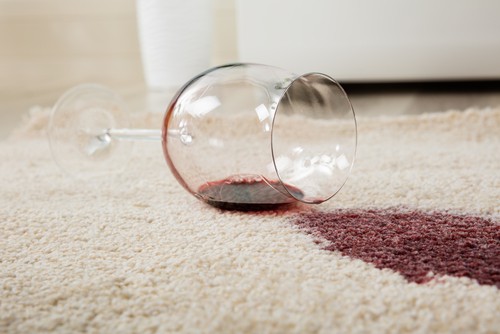
Removing Food and Beverage Stains
Gently blot the stain, then apply a mild detergent solution mixed with water. For tougher stains like red wine, a solution of hydrogen peroxide mixed with dish soap can be effective.
Dealing with Oil and Grease Marks
Apply a baking soda paste to absorb the oil, leave it for a few minutes, then brush off and clean with a mild detergent.
Strategies for Tough Stains Like Wine or Chocolate
For wine stains, blot up as much as possible, then treat with a mixture of vinegar and water. For chocolate, scrape off any excess first, then use a mild detergent solution.
The Stain Removal Process
Start by blotting the stain gently, then apply your chosen cleaning solution. Use a soft brush to lightly agitate the area, then rinse with cold water.
Proper blotting is crucial – it absorbs the spill without pushing it deeper into the fabric. Use a clean, dry cloth and press down firmly.
After treating the stain, rinse the area with cold water to remove any cleaning residue. Allow the upholstery to air dry completely, avoiding direct heat or sunlight.
Commercial Stain Removal Products
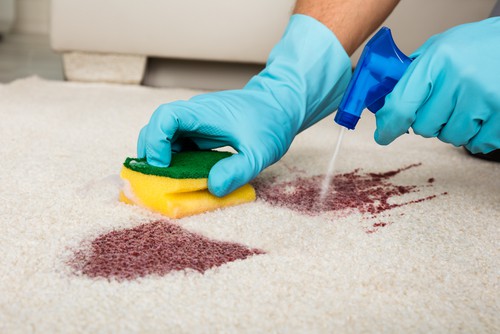
In cases where homemade solutions are not effective, commercial upholstery cleaners can be used. They are formulated for tougher stains and can provide a deeper clean.
Choose a cleaner that’s suitable for your upholstery type. Look for products specifically designed for upholstery and avoid those with harsh chemicals.
Always follow the instructions on the product label. Test on a small, hidden area first, and use in a well-ventilated area to avoid inhaling fumes.
Upholstery Care Post-Stain Removal
After cleaning, gently brush the fabric in its natural direction to restore texture. For materials like velvet, use a soft-bristle brush to lift the pile.
Regularly vacuum upholstery to remove dust and dirt. Treat spills immediately to prevent them from setting in.
Consider using protective covers, especially during gatherings or celebrations, to shield upholstery from potential spills.
Additionally, avoid eating or drinking on upholstered furniture to minimize the risk of accidents.
Special Considerations for Delicate Upholstery
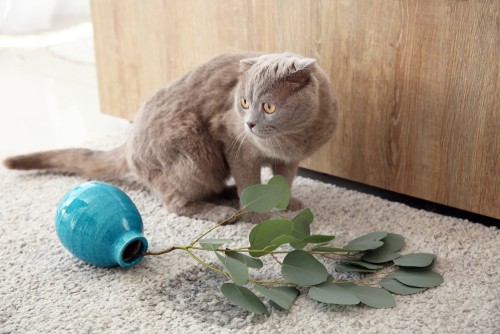
For delicate fabrics like silk or antique upholstery, opt for gentle cleaning methods. Avoid water-based cleaners as they might cause water stains or fabric damage.
For expensive, antique, or delicate upholstery, consider consulting a professional cleaner. They possess the necessary expertise and equipment to handle challenging stains without causing damage.
When attempting DIY stain removal on delicate fabrics, proceed with caution. Use mild solutions and avoid excessive rubbing or scrubbing which can deteriorate the fabric.
Preventative Measures for Future Celebrations
Place drinks and food on stable surfaces away from upholstered furniture. Provide guests with easy access to coasters and napkins during the celebration.
Before events, thoroughly clean and vacuum upholstery. Applying a fabric protector can help repel spills and make future cleaning easier.
Keep a basic stain removal kit nearby during celebrations, including clean cloths, mild detergent, and distilled water for quick response to any spills.
Eco-Friendly and Safe Cleaning Practices
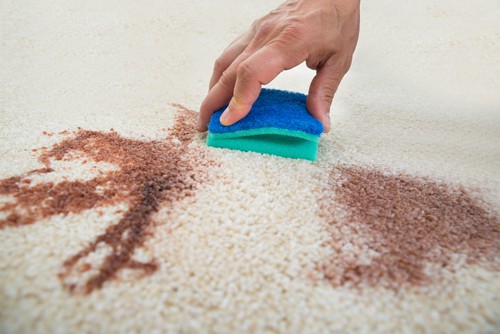
Use environmentally friendly cleaning products that are free from harsh chemicals. Ingredients like vinegar and baking soda are not only effective but also safe for the environment.
Choose non-toxic and fragrance-free cleaners to ensure the safety of children and pets. Always store cleaning products out of reach of children and animals.
Using non-toxic cleaners improves indoor air quality and reduces the risk of allergic reactions or chemical sensitivities, making your home safer and healthier.
Frequently Asked Questions
How can I quickly identify the type of stain on my upholstery?
Examine the stain’s color, texture, and odor. Food stains are usually colored, grease stains are slick and dark, and beverage stains often leave a ring.
Are there any common household items I can use for immediate stain treatment?
Yes, items like salt (for red wine), baking soda (for grease), and mild dish soap mixed with water are effective for immediate treatment.
How long should I wait before treating a stain?
Act as quickly as possible. The sooner you treat a stain, the easier it will be to remove.
Can I use the same stain-removal technique for all types of upholstery?
No, always tailor your stain removal approach to the type of fabric. Check the upholstery’s care label for specific instructions.
What should I do if a stain does not come out after the first attempt?
If the stain persists, reapply the cleaning solution and let it sit for a longer period. If it still doesn’t come out, consult a professional cleaner.
Upholstery Stain Removal Tips for Post-New Year Spills – Conclusion
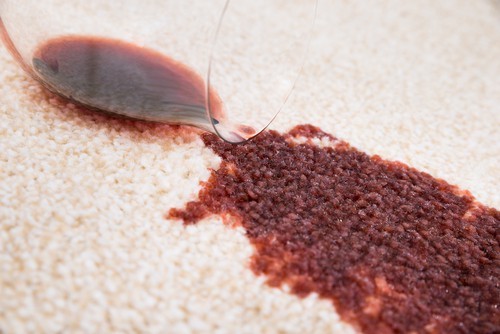
Effective stain removal is essential for maintaining the appearance and integrity of your upholstery, especially following lively New Year celebrations.
By understanding the types of stains and appropriate removal techniques, you can keep your upholstery looking fresh and clean.
Regular care and timely action are key to preserving the life of your furniture.
Embrace these stain-removal tips and enjoy a clean, welcoming home environment, ready to host countless more celebrations and gatherings.
Are you seeking professional and reliable upholstery cleaning services in Singapore? Contact us today!
